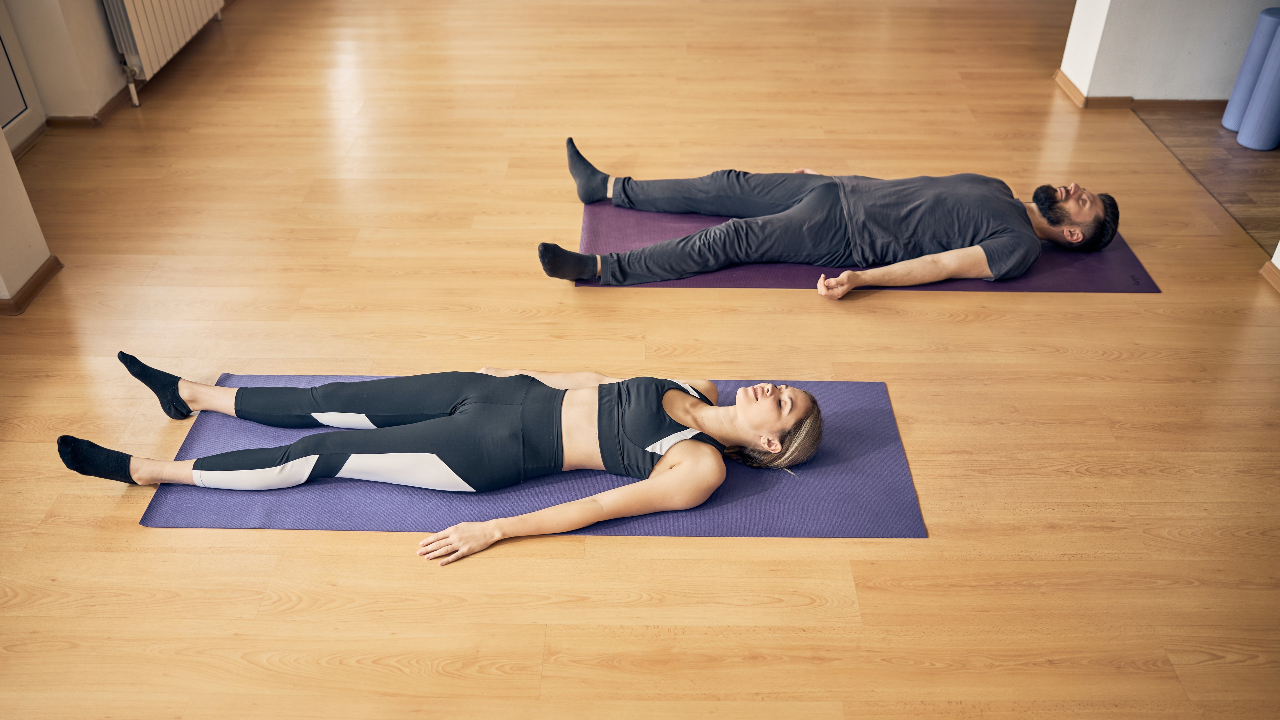Martini Pose: The Most Relaxing Thing You've Never Heard Of
Oct 02, 2023
Lately, we've been experimenting with a new twist on the classical martini in our house.
It's not an dirty martini.
It's not an apple-tini.
And it doesn't have an orange wedge on the rim.
In fact, it's not even something you drink at the end of the day. It's something you do.
Martini pose.
We got the name from Annie Carpenter, one of our favorite modern yoga teachers.
What is martini pose?
It's a way to instantly downshift the state of your nervous system -- without the next-day hangover.
If you've ever done yoga, you know martini pose. It's that blissful moment of savasana at the end of practice, where you lie down on your back, let go, and do absolutely nothing.
But here's the difference. In yoga, you have to get through the entree of challenging poses before you get to enjoy this period of rest. With martini pose, you skip straight to the dessert.
At this point, you're probably thinking, "Why on earth would I carve out time at the end of a crazy day to lie down and do nothing?"
The reason? Momentum.
Every day, work, traffic, social media, logistics, emails, the news, and a thousand other things spin our sympathetic nervous system into overdrive, generating a momentum of stress and agitation. This is the momentum behind the tension in your body, your irritable mind, your shrinking attention span, and the whirling thoughts that leave you scattered and overwhelmed.
This out-of-control momentum is the real reason it's so hard to slow down at the end of a crazy day and be present with your partner, kids, and friends.
On some level, we all know this. And we even have a bunch of less-than-skillful ways for interrupting this momentum -- Instagram, Netflix, doom scrolling, or real martinis (the double-shot-of-gin kind - but we're not judging).
These strategies mostly create an illusion of relaxation. They don't stop the momentum. They just numb us out so it doesn't feel so intense.
Martini pose, on the other hand, cuts to the core of the problem. It applies a much needed break to the momentum spinning our minds into over-drive.
Research on this practice (also known as yoga nidra or Non-Sleep Deep Relaxation, NSDR) points to a whole host of scientifically validated benefits:
- Decreased Stress and Anxiety (Kamakyha, 2008)
- Optimal blood glucose management (Amita et al., 2007)
- Enhanced cognitive processing and sleep (Datta et al., 2023)
But how can you weave martini pose into the midst of your busy life? That's the real question.
Here are three tools.
Tools
1. Make time for martini pose.
Of all the practices we've recommended in The Klemp Insights Newsletter, this one is the easiest to do. It's time-efficient. It requires no effort. And it feels amazing.
So what's the catch? You have to carve out space to do it.
And when we're rushing through the day, dropping into martini pose is about the last thing we want to do. From the productivity-is-everything value system of our culture, after all, a practice like this feels frivolous, irrational even.
But feeling less stressed, anxious, and amped isn't irrational. It's actually far more sane than the alternative, not to mention far more enjoyable.
So here are a few ideas for weaving martini pose into your daily life:
- Do it after a hard workout. The emerging science in exercise physiology tells us that these brief moments of deep rest can supercharge workout recovery.
- Do it after challenging work tasks. Build nervous system flexibility by shifting from intense cognitive tasks to short bouts of deep rest throughout the day.
- Do it as your end-of-the-day transition. For many of us, the shift from work to family time is a critical moment of transition. So try ending your workday 5 to 10 minutes early and drop into martini pose. Or, if you're like us, try out family martini pose, where you all lie down on the floor at the end of the day and reset your nervous systems together.
2. Try the extended-exhale martini.
What's the technique for getting the most out of martini pose?
Here's one powerful approach: lie down on your back, let your arms flop to your sides (palms facing up), and extend the length of each exhale.
For instance, inhale four counts, exhale eight counts. You can even experiment with gently holding your breath at the end of the exhale to deepen the state of relaxation.
Doing this for just 5 to 10 minutes allows you to leverage what scientists call "respiratory sinus arrhythmia," the natural decrease of heart rate and nervous system activation that occurs when we lengthen the exhale.
3. Try the do-absolutely-nothing martini pose.
Sometimes, the ultimate form of relaxation isn't adding another technique or breathing practice. It's giving your self permission to do absolutely nothing.
Here's how you do it. Lie down on your back. Arms out to the side. Palms face the sky.
Put on some blissed out music if you want or even an eye mask. And now, for the magical part.
Do absolutely nothing.
Allow your mind and body to have a rare moment of rest.
If you're looking for some audio tracks to guide you, check out Nate's free yoga nidra and extended exhale practices that accompany his new book OPEN.
Want more of these life tools delivered to your inbox?
Sign up for the Klemp Insights Newsletter.
